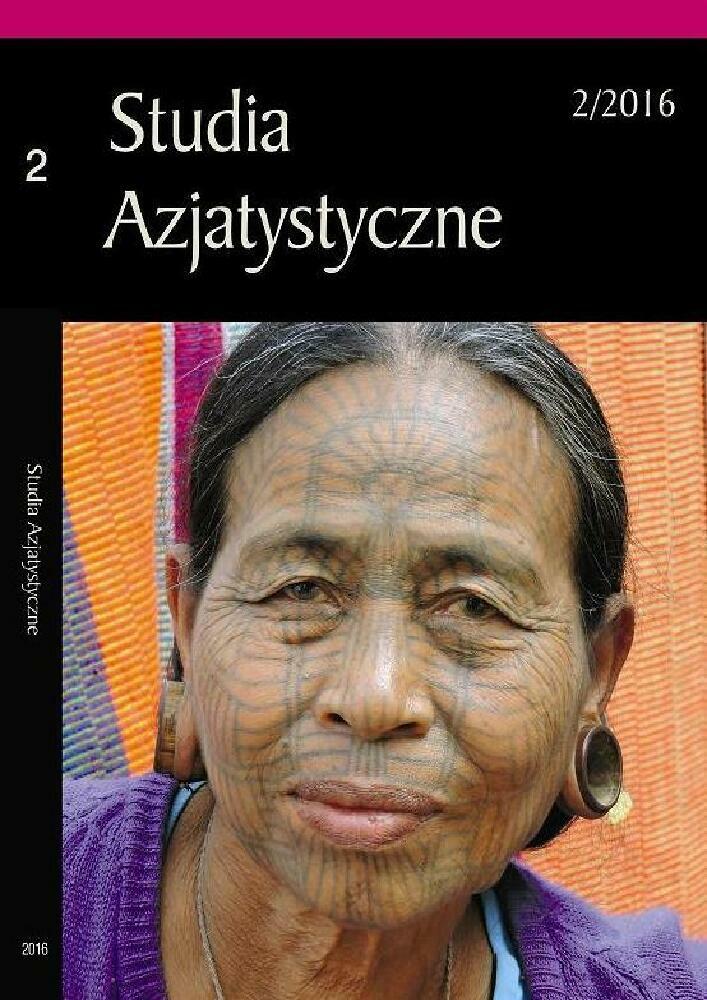Abstrakt
The purpose of this article is to present the Chinese diaspora in two Southeast Asian countries, Malaysia and Singapore, and the influence of this group on the society and economy of these countries. Chinese people, who left the country, for instance, for political or remuneration reasons and settled in Southeast Asia, have a significant impact on the region. The influence of this group on countries like Malaysia, Singapore, Thailand and Indonesia, where it has been present for centuries, is substantial. The attitudes of the Islamic Malaysian and secular Singapore governments to overseas Chinese is completely different. In spite of many political, social and economic difficulties, the Chinese diaspora has been able to preserve its culture, language and tradition, and has achieved significant economic success. This economic success has been often associated with aversion to the local community. In modern Southeast Asian history, there are the examples of social tensions that have been turn into anti-Chinese riots. Nevertheless, the Chinese diaspora has contributed actively to the economic development of Malaysia, as well as the economic and political development of Singapore, basically during one generation, on a significant scale.Bibliografia
Chan, Adrian. 1996. Confucianism and development in East Asia, Journal of Contemporary Asia 26, 1 (1996), 28-45.
Giddens, Anthony. 2008. Socjologia. Warszawa: Wydawnictwo Naukowe PWN.
Hasan, Haji Abdul Rahman. 2014. Social Statistics Bulletin Malaysia 2014. Putrajaya: Department of Statistics Malaysia.
Hong, Liu. 2005. New Migrants and the Revival of Overseas Chinese Nationalism, Journal of Contemporary China 14, 43 (2005), 291-316.
Huang, I-shu. 2001. Culture of Chinese Diaspora, China Report 37, 4 (2001), 445-449.
Kawangit, Razeleigh Muhamat. 2015. Assimilation of Baba and Nyonya in Malaysia, International Journal of Social Science Studies 3, 2 (2015), 11-20.
Kofman, Jan (red.). 1992. Encyklopedia Naukowa PWN. Warszawa: Wydawnictwo Naukowe PWN.
Kyong-Dong, Kim. 1997. Confucianism, Economic Growth And Democracy, Asian Perspective Vol. 21, No. 2, Special Issue on APEC, 77-97.
Lee, Cheuk Yin. 2003. Do traditional values still exist in modern Chinese societies? The case of Singapore and China, Asia Europe Journal 1 (2003), 43-59.
Lee, Hock Guan. 2005. Affirmative Action in Malaysia, Southeast Asian Affairs 2005, 211-230.
Lee, Hwok-Aun. 2010. Racial Inequality and Affirmative Action in Malaysia and South Africa. Amherst: University of Massachusetts [niepublikowana praca doktorska].
Lee, Su Kim. 2008. The Peranakan Baba Nyonya culture: Resurgence or disappearance?, SARI: Jurnal Alam dan Tamadun Melayu 26 (2008), 161-170.
McKeown, Adam. 1999. Conceptualizing Chinese Diasporas, 1842 to 1949, The Journal of Asian Studies 58, 2 (1999), 306-337.
Meyer, Maciej. 2012a. Wpływ chińskiej diaspory na gospodarkę ChRL po 1978 roku, Kwartalnik SGH 4, 12 (2012), 113-127.
Meyer, Maciej. 2012b. Etyka konfucjańska a chiński duch, Oeconomia Copernicana 2 (2012), 97-112.
Nik Maheran Nik, Muhammad, Filzah Md Isa. 2009. Impact of Culture and Knowledge Acquisition to Organizational Success: Study on Chinese and Malay Small Firms, Asian Culture and History 1, 2 (2009), 63-71.
Noor, Noraini M. 2009. The Future of Malay-Chinese Relations in Malaysia: C. J. Montiel, N. M. Noor (eds). Peace Psychology in Asia. London, New York: Springer Science & Business Media, 161-172.
Picquart, Pierre. 2006. Imperium Chińskie. Historia i teraźniejszość chińskiej diaspory. Warszawa: Wydawnictwo Akademickie Dialog.
Shamsul, A. B. 1997. The Economic Dimension of Malay Nationalism. The Socio-Historical Roots of the New Economic Policy and Its Contemporary Implications, The Developing Economies 35, 3 (1997), 240-261.
Yong, Ching Fatt. 2013. Tan Kha-Kee. The Making of an Overseas Chinese Legend. [Singapur]: World Scienfitic.
Wah, Sheh Seow. 2001. Chinese Cultural Values and their Implications to Chinese Management, Singapore Management Review 23, 2 (2001), 75-83.
Wong, Wee Kim. 2014. Yearbook of Statistics Singapore, 2014. Singapur: Department of Statistics, Ministry of Trade & Industry, Republic of Singapore.
Źródła internetowe
[bez autora] The World Factbook, CIA Factbook. https://www.cia.gov/library/publications/the-world-factbook/, dostęp: 31.03.2015.
[bez autora]. 2011. Mapping migration, The Economist, http://www.economist.com/blogs/dailychart/2011/11/diasporas, dostęp: 31.03.2015.
[bez autora]. Diaspora, Słownik języka polskiego PWN, http://sjp.pwn.pl/sjp/;2555089, dostęp: 15.02.2016.
Ang, Helen. 2009. Future for Chinese in Malaysia, Interesting Stats. CPI Asia, http://xa.yimg.com/kq/groups/22488884/1167118709/name/Malaysia-Future_for_Chinese_-_Interesting_Statistics.pdf, dostęp: 31.03.2015.
Chareonwongsak, Kriengsak. 2014. The Global Chinese Diaspora – Creating Wealth, Contributing to National Development Abstract, http://www.asli.com.my/uploads/20121128045203_Full%20paper_Dr%20Kriengsak%20Chareonwongsak_231112.pdf, dostęp: 31.03.2015.
Department of Statistics Malaysia. 2011. 2010 Population and Housing Census of Malaysia, http://www.statistics.gov.my/portal/download_Population/files/census2010/Taburan_Penduduk_dan_Ciri-ciri_Asas_Demografi.pdf, dostęp: 01.03.2014.
Eno, Robert, 2015. The Analects of Confucius. An Online Teaching Translation, http://www.indiana.edu/~p374/Analects_of_Confucius_%28Eno-2015%29.pdf, dostęp: 09.02.2016.
East Asia Analytical Unit. 1995. Overseas Chinese Business Networks in Asia. Canberra: Department of Foreign Affairs and Trade, http://www.jstor.org/stable/155515, dostęp: 01.03.2014.
Khoo, Boo Teik. 2005. Ethnic Structure, Inequality and Governance in the Public Sector Malaysian Experiences, Democracy, Governance and Human Rights Programme Paper 20,
http://www.unrisd.org/80256B3C005BCCF9/%28httpAuxPages%29/19309421DF6D65D3C12570FA00392E12/$file/Khoo%20%28small%29.pdf, dostęp: 31.03.2015.
Lee Eu Fah, Edmond. 2000. Profile of the Singapore Chinese Dialect Groups, Statistics Singapore Newsletter,
http://www.howardscott.net/4/Swatow_A_Colonial_Heritage/Files/Documentation/Lee%20Eu%20Fah.pdf, dostęp: 31.03.2015.
Leitch LePoer, Barbara (red.). 1989. Singapore: A Country Study. http://www.guyanagraphic.com/sites/default/files/singapore_-_a_country_study.pdf, dostęp: 31.03.2015.
Singapore Department of Statistics. 2011. Singapore Census of Population 2010, http://www.singstat.gov.sg/docs/default-source/default-document-library/publications/publications_and_papers/cop2010/ census_2010_admin/cop2010admin.pdf, dostęp: 31.03.2015.
The Equal Rights Trust. 2012. Washing the Tigers. Addressing Discrimination and Inequality in Malaysia, http://www.equalrightstrust.org/ertdocumentbank/Malaysia%20CR%201.pdf, dostęp: 08.02.2016.
Licencja

Ten utwór jest dostępny na licencji Creative Commons Uznanie autorstwa 4.0 Międzynarodowe.
